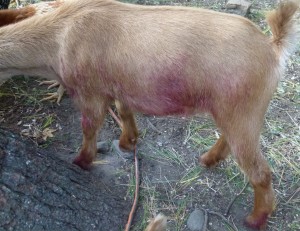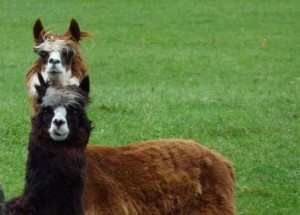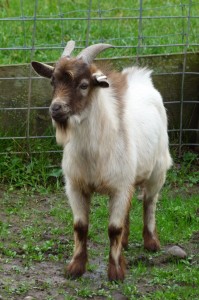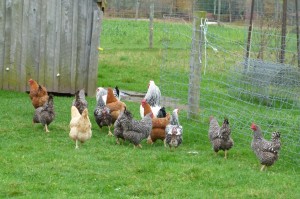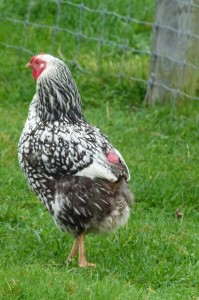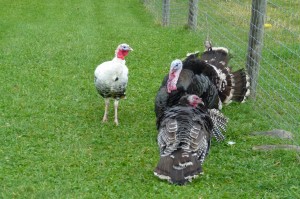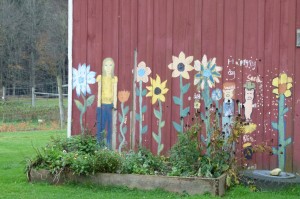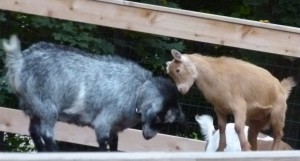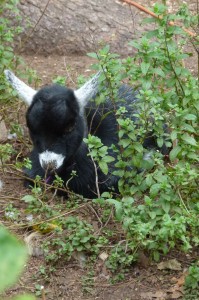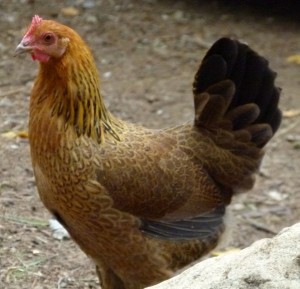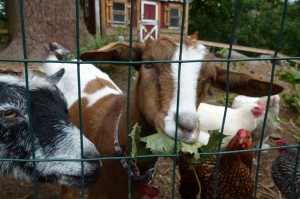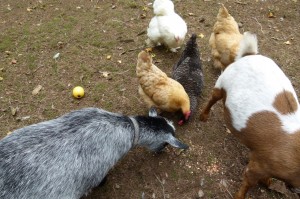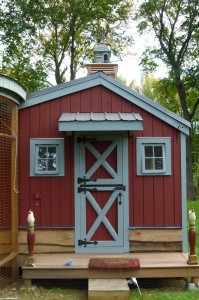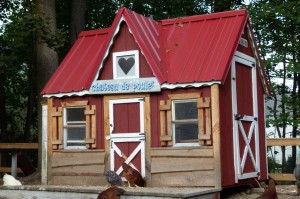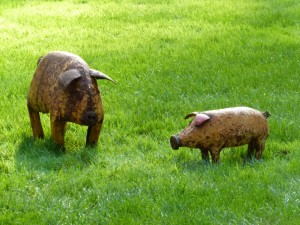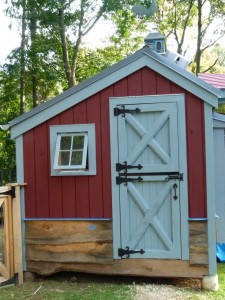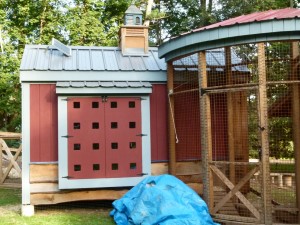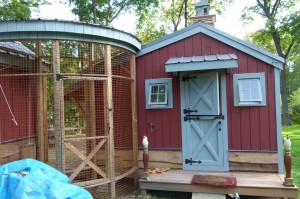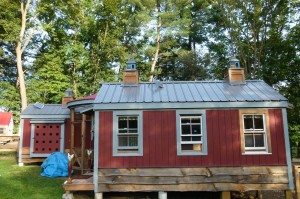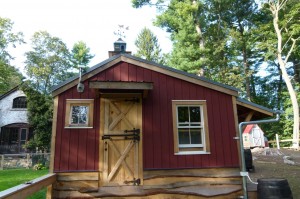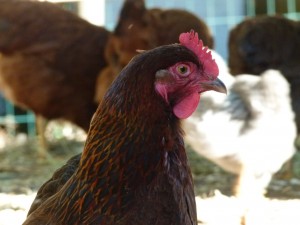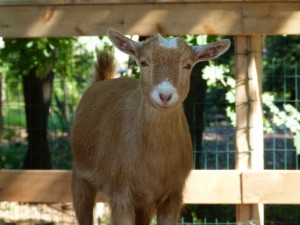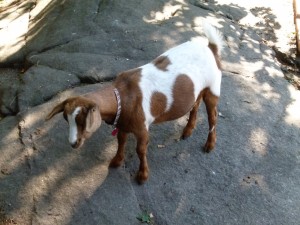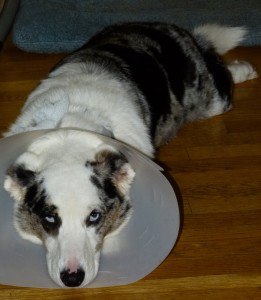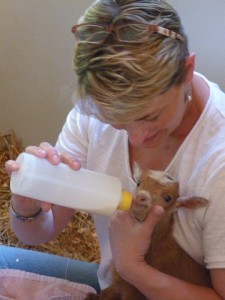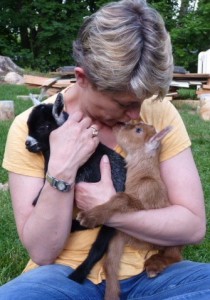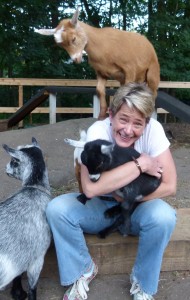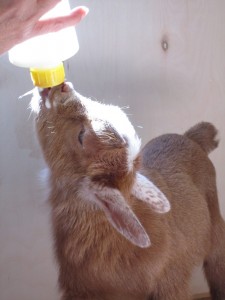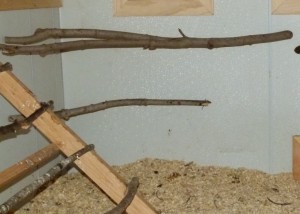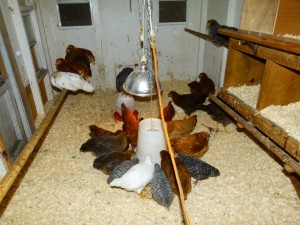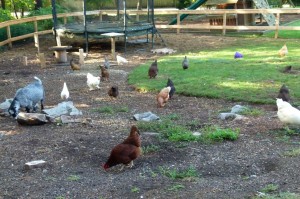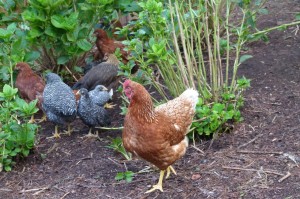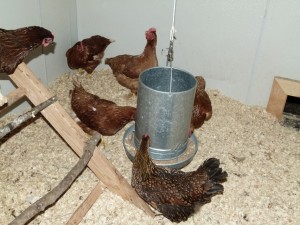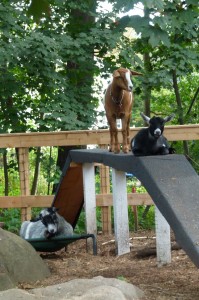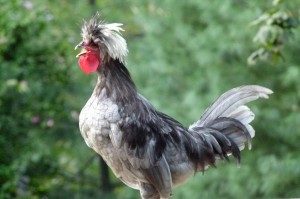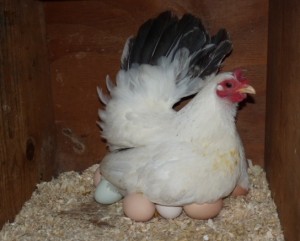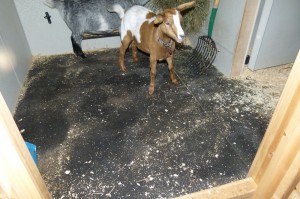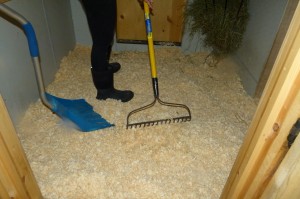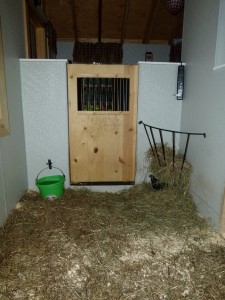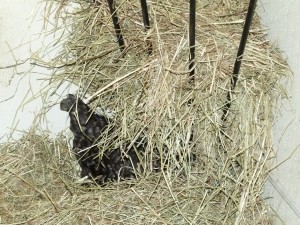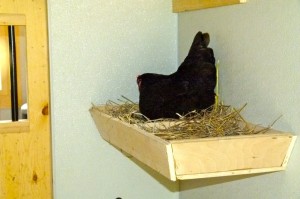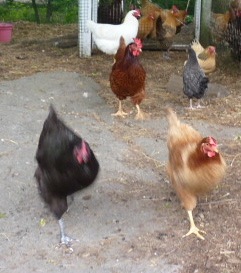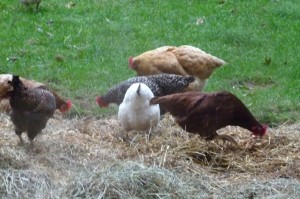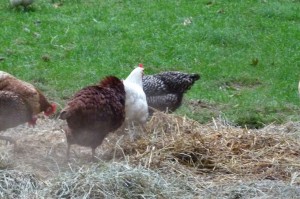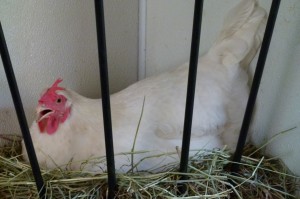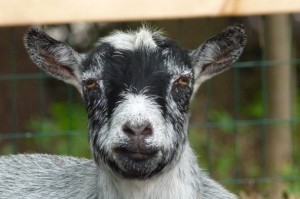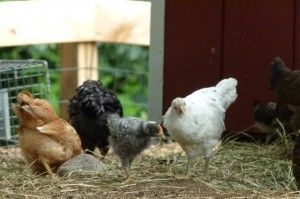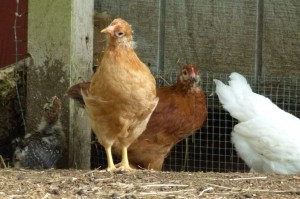Well, they’ve taken about 3 more months to finish than I anticipated, but I can finally say that the goat house and chicken coop are (almost) complete. The only major thing left to do is cover up those ugly cement posts that are holding the buildings up. They say all good things come to those who wait. I sure hope so.
And in case you didn’t notice, I decided to stick with the grey trim on the barn red. Given a chance to do it over, I probably would have chosen either white or black trim, but I wasn’t going to change it when it was half done. I’ll learn to love it.
I collected old tractor wheels for a while a few years back, always with the intention of one day hanging them on my barn. They are old pieces to tilling or haying machines I think. If you looked often enough on eBay, you could find them in all shapes, colors and sizes. All with wonderful worn paint and full of character. My husband of course thought I was completely bonkers. Wasn’t he shocked last year when they showed up as items for sale at Restoration Hardware! The very same vintage tractor wheels I’d been collecting for a few dollars each were now in a fancy store.
I got great satisfaction today in screwing the big bolts I’d bought for the purpose into the walls and hanging my wheels, finally, on my goat house. I think they look great. I need to get more of those small rusty barn stars I hung up on the soffit so I can put them around both goat house and coop. Maybe I can do a better job of centering them over the windows, too?

The front of the goat house.
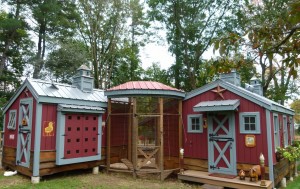
The chicken house, 'silo chicken run', and goat house — finally complete.
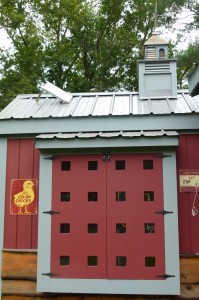
I've bought a few vintage-style tin signs with hanging them on the coop in mind.

I guess I needed a level out there today too — I think that Fresh Eggs sign is a little askew.
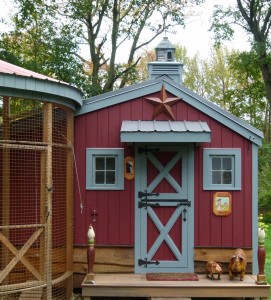
I also had ready and waiting a big barn star for above the goat house and chicken coop doors.
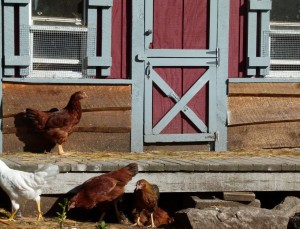
The old coop looks so much better with it's the little facelift it got.
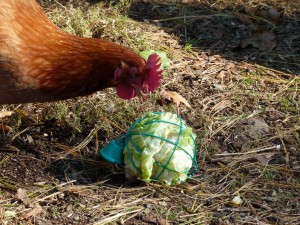
To add to the chicken's entertainment now that fall is settling in, I got two of these metal cage treat balls in addition to the yellow seed treat ball they already have. This one you stuff with lettuce leaves.

The yellow seed treat ball won by a landslide over the lettuce balls.
